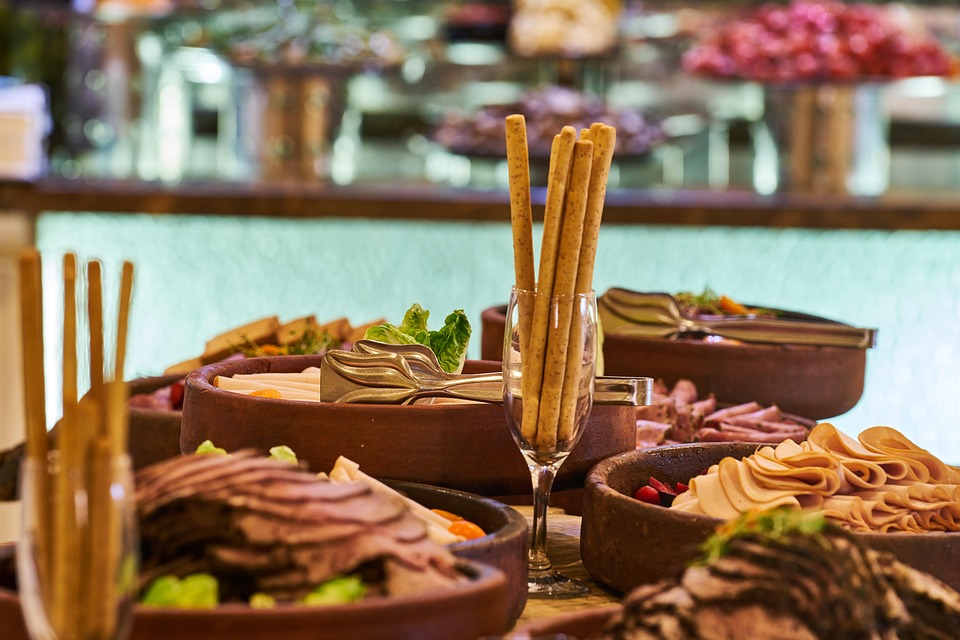The Rise of Ghost Kitchens
In recent years, the concept of ghost kitchens has been gaining popularity in the restaurant industry. Ghost kitchens, also known as virtual kitchens or cloud kitchens, are professional food preparation and cooking facilities set up for the preparation of delivery-only meals. These kitchens have no physical storefront for customers to dine in and primarily focus on fulfilling orders placed through online delivery platforms.
Ghost kitchens are revolutionizing the way restaurants operate by eliminating the need for expensive storefronts and dining spaces. This allows restaurants to cut down on overhead costs significantly and focus solely on preparing high-quality food for delivery. As a result, many traditional restaurants are now facing stiff competition from these virtual kitchens.
Financial Impact on Traditional Restaurants
The rise of ghost kitchens has had a significant financial impact on traditional restaurants. With the increasing popularity of food delivery services, more customers are opting to order in rather than dine out. This shift in consumer behavior has led to a decline in foot traffic for traditional restaurants, resulting in lower sales and revenue.
Furthermore, traditional restaurants are now facing increased competition from ghost kitchens that operate with lower overhead costs. This puts pressure on traditional restaurants to either adapt to the changing landscape or risk losing customers to more efficient and cost-effective alternatives.
Market Share and Volumes
Ghost kitchens have been rapidly gaining market share in the food delivery industry. According to a recent report by CulinaryCoverage.com, ghost kitchens now account for 10% of all food delivery orders in the United States. This number is expected to grow significantly in the coming years as more consumers embrace the convenience of ordering food online.
In terms of volumes, ghost kitchens are able to fulfill a high volume of orders due to their streamlined operations and focus on delivery. This allows them to serve a larger customer base and operate more efficiently than traditional restaurants. As a result, ghost kitchens are able to capture a larger share of the market and outperform traditional restaurants in terms of order fulfillment and customer satisfaction.
Challenges Faced by Traditional Restaurants
Traditional restaurants are facing a number of challenges as they try to compete with ghost kitchens. One of the biggest challenges is the high overhead costs associated with running a physical storefront. Rent, utilities, and staffing expenses can quickly add up, putting traditional restaurants at a disadvantage compared to ghost kitchens.
Another challenge for traditional restaurants is the shift in consumer preferences towards online ordering and delivery. Many consumers now prefer the convenience of ordering food from the comfort of their own homes, leading to a decline in dine-in customers for traditional restaurants. This change in behavior has forced traditional restaurants to adapt their business models to incorporate delivery services, which can be costly and time-consuming.
Future Plans for Traditional Restaurants
In order to stay competitive in the face of rising ghost kitchens, traditional restaurants are exploring new strategies to attract customers and increase revenue. One such strategy is the implementation of virtual brands, which are delivery-only concepts created by existing restaurants to cater to the growing demand for online ordering.
Virtual brands allow traditional restaurants to expand their reach and appeal to a wider audience without the need for additional physical locations. By leveraging their existing infrastructure and kitchen facilities, traditional restaurants can launch virtual brands that offer unique and innovative menus to attract new customers.
Additionally, traditional restaurants are investing in technology and automation to streamline their operations and improve efficiency. By implementing online ordering systems, mobile apps, and delivery tracking software, restaurants can enhance the customer experience and compete more effectively with ghost kitchens.
Conclusion
In conclusion, the rise of ghost kitchens presents a significant challenge for traditional restaurants in the foodservice industry. Ghost kitchens are able to operate with lower overhead costs, fulfill a high volume of orders, and cater to the growing demand for online delivery. As a result, traditional restaurants are facing increased competition and pressure to adapt to the changing landscape.
However, traditional restaurants have the opportunity to innovate and differentiate themselves by leveraging technology, exploring new concepts like virtual brands, and enhancing the customer experience. By embracing these strategies and staying ahead of market trends, traditional restaurants can successfully compete with ghost kitchens and thrive in the evolving foodservice industry.
Overall, the competition between traditional restaurants and ghost kitchens is reshaping the way food is prepared, delivered, and consumed. As the industry continues to evolve, it will be crucial for restaurants to stay agile, innovative, and customer-focused in order to remain relevant and successful in the competitive landscape of the future.



